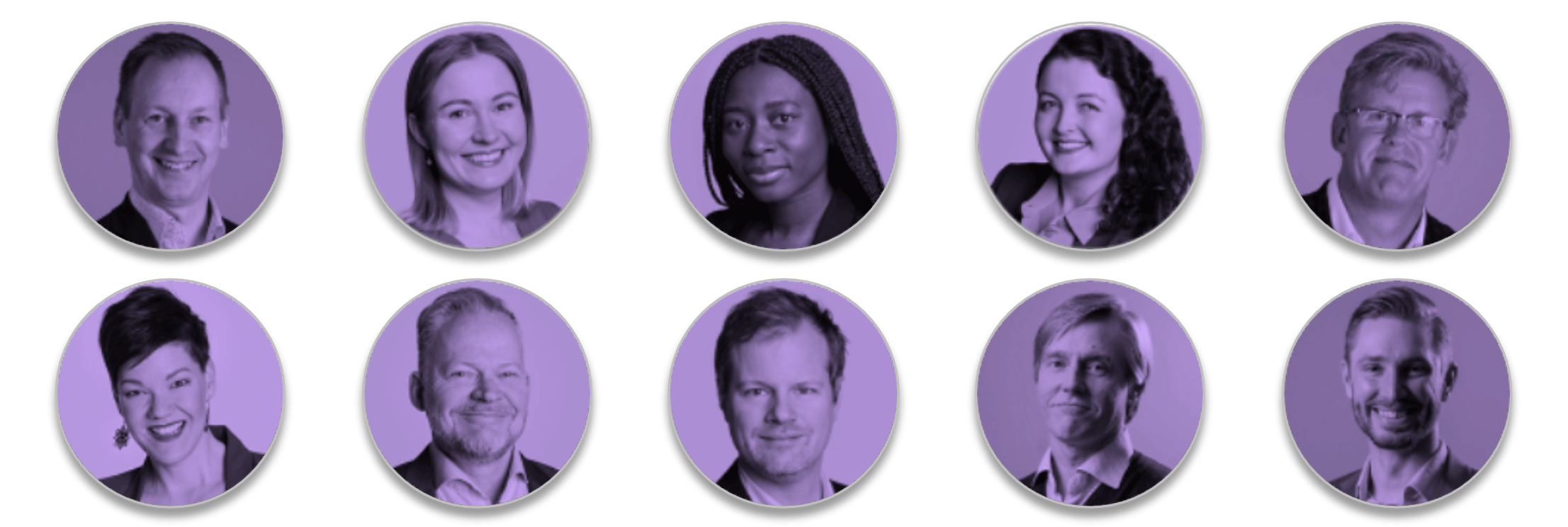Facilitation - the skill of successful leaders and organisations
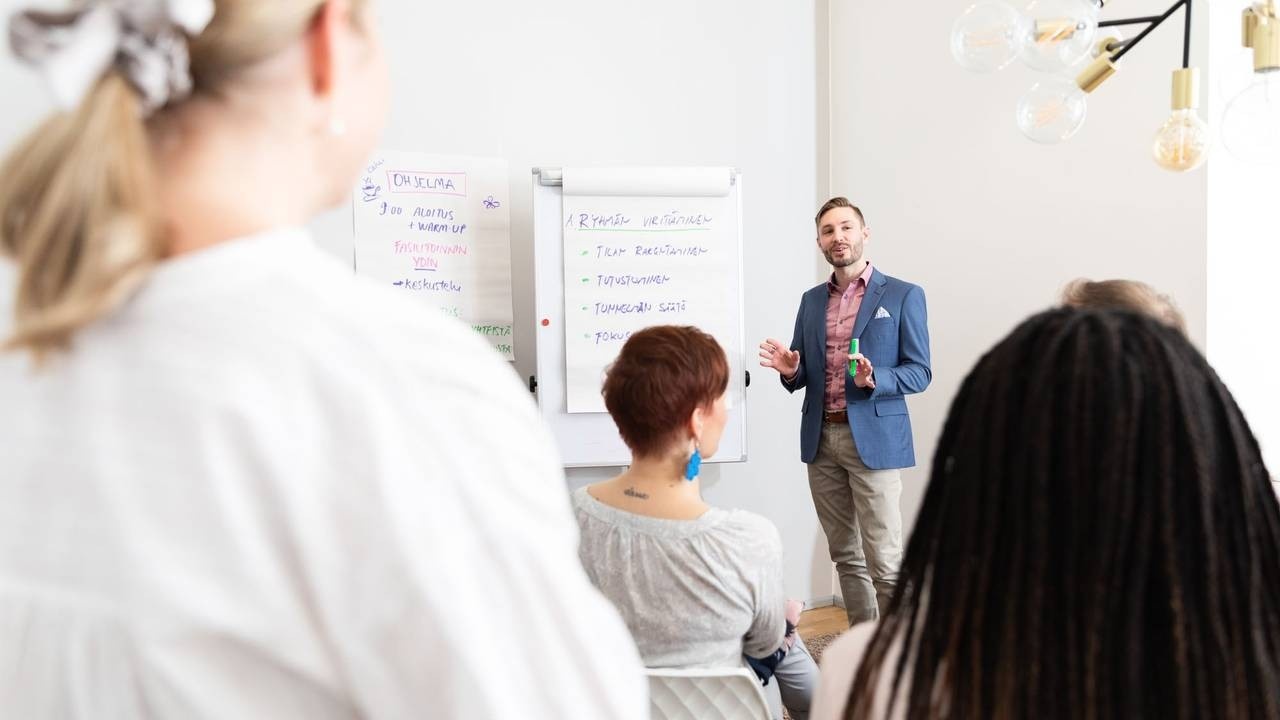
This summer will mark my six-year anniversary at Grape People. I’ve grown tremendously during these years – much faster than in any previous job. I’ve always been hungry to learn new things and I’ve had the good fortune of having employers that support my natural curiosity. In fact I’m surprised to find I’m still working for the same employer for this long, given my desire for novelty.
In the past year I’ve given extra thought to what has made me stay at Grape People. There’s something in the DNA of the company that I find sustainable, in the purest sense of the word. Never before have I thought I might actually stay at the same company for 10 or 20 years.
So let’s dig into that DNA. What is it that makes this employer desirable and sustainable? It has a lot to do with their leadership philosophy.
Grape People was founded to make leadership better. At first, the idea was that leadership could be made easier by shifting responsibility to the team instead of the leader trying to carry it all. In truth, this doesn’t make leadership easier because new problems arise when a system changes. However, we do believe that including everyone in leadership makes for better outcomes.
It’s taken me a few years to grasp what core principles guide our thinking and why exactly this thing we are so passionate about – facilitation – helps teams and organizations perform better.
Table of contents:
- Engagement of all meeting participants
- Inclusion of all voices in the conversation
- Diversity of thinking
- Rigorous convergent thinking
- Commitment to outcomes
- Creating group alignment
Engagement of all meeting participants
Let’s start with the topic I most often encounter in my work: engagement. In these times of remote work, it seems that the #1 problem is lacking engagement, particularly in meetings. People are physically online but mentally offline. Elsewhere. Disconnected.
This isn’t a new problem – people were mentally absent from meetings already when we were sitting in the same room. It’s just more difficult to react to it now that we communicate virtually. Cameras are off and people are reluctant to turn them on. Whenever you ask the group for input, you are met with an uncomfortable silence.
As the host, you are left wondering: is anybody even paying attention? Is this going to be another wasted meeting?
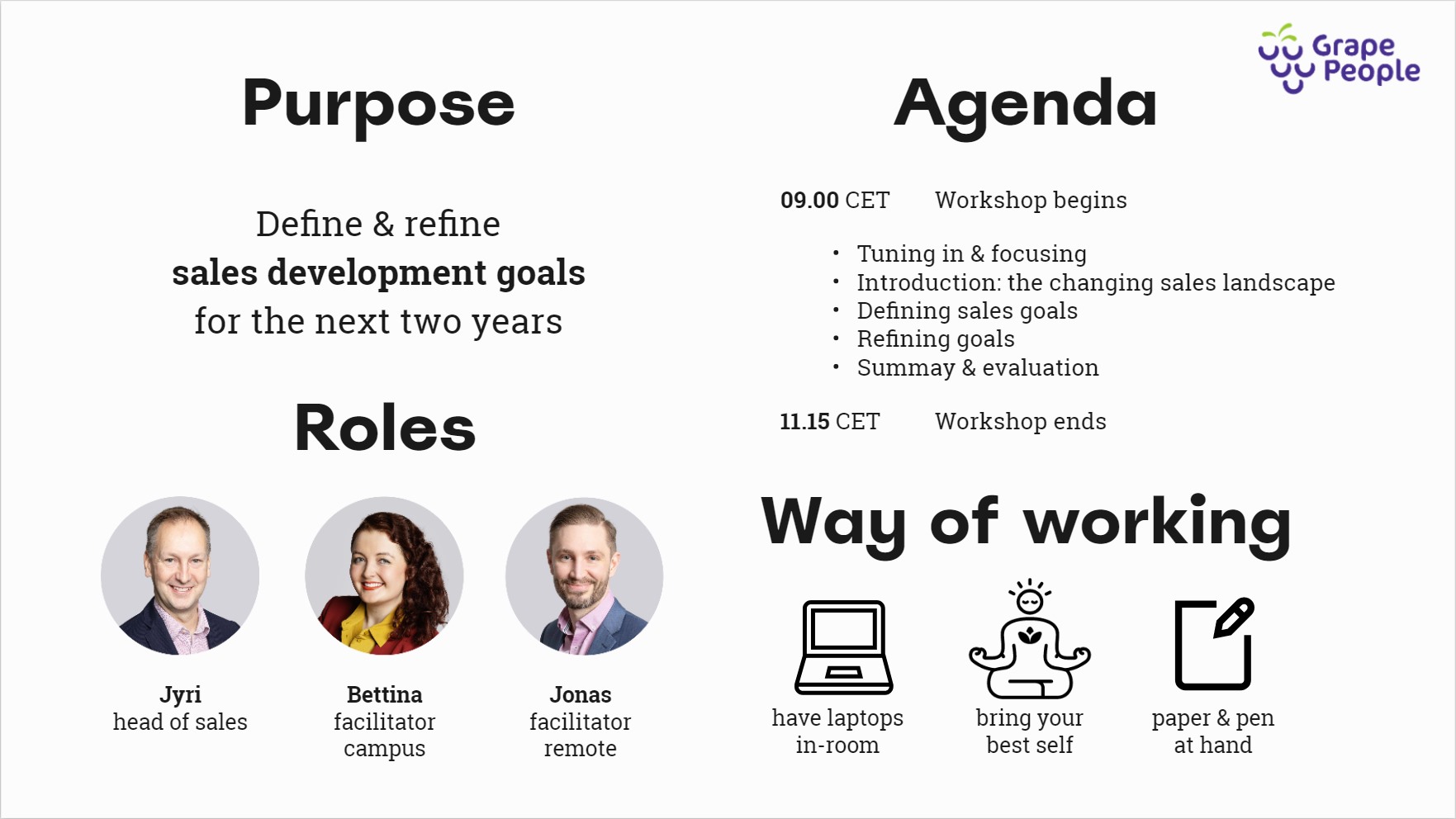
What to do about engagement in meetings?
Think about what happens before and at the beginning of the meeting. How have you communicated the purpose of the session? Does each person understand their role in the meeting? Have you outlined the way of working, including whether camera use is desired?
We need to prepare mentally for any demanding task, including meetings. If the host helps me orient myself in advance and at the beginning of the meeting, it’s easier for me to participate.
Actionable advice for engagement:
- Include the purpose of the meeting in the invitation.
- Communicate the roles of the meeting in advance. Sometimes this means talking to meeting attendees individually before the meeting.
- Outline the way of working in the invitation, including camera and microphone use, note taking.
- Repeat all of the above when beginning the meeting. Before delving into the agenda, ask about people’s expectations. What outcome would make the meeting worthwhile?
Inclusion of all voices in the conversation
One important contributor to engagement is the sense of inclusion. I need to believe that my input is genuinely welcome, even wanted. I need to be included in sense-making, meaning-making, solution finding and action planning.
There are many ways to exclude people, intentionally or unintentionally. Who is invited to a meeting? What does it mean for those who are not invited? How are decisions made and communicated? When ideas are brainstormed, how are those ideas used?
In hybrid meetings, the remote participants are often the target of unintentional exclusion. It’s no wonder – face to face communication is so much richer and easier than virtual that we must actively resist favouring and prioritising the people sharing a room with us.
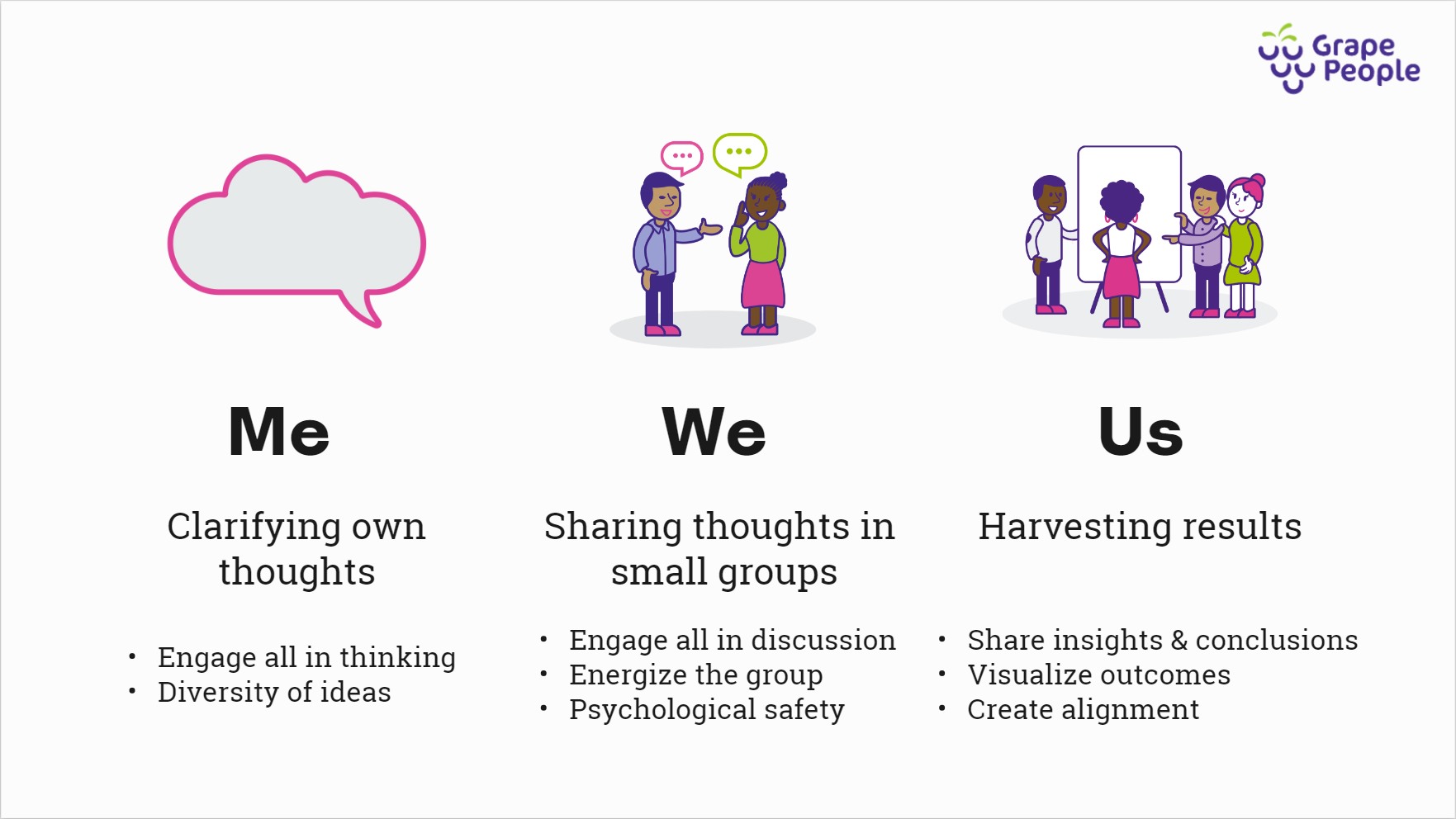
What to do about inclusion in meetings?
There are many solutions for this, but let’s take just one: vary the mode of communication.
Are we all discussing as one group, one person speaking at a time, everyone else waiting for a turn to speak? In other words, is the meeting a series of monologues?
We can change this default mode of communication rather easily.
Actionable advice for inclusion:
- When starting a discussion, instead of asking the group “who wants to go first” or “are there any questions”, ask everyone to write down their ideas on paper or in the meeting chat. This engages everyone in thinking.
- Before opening the discussion for the whole group, ask people to share their thoughts with a pair or trio. In the same room, people can turn to each other for a more intimate discussion. In remote meetings, use the Breakout Rooms feature to form groups of 2-3. This stage can last anywhere from 2 to 10 minutes, depending on the topic.
- In these small groups, people feel safer to speak their mind than in front of a larger group. They get initial feedback on their ideas, helping them improve the idea or encouraging them to share it with the whole group.
- Ask a random person from each small group to share some discussion highlights. Not only are you likely to get more feedback this way – you’ve also helped participants bond better.
Diversity of thinking
If we want our team and organisation to succeed, we need to have our eyes and ears open to catch signals from the environment. What do we need to react to? How is the competitive environment changing? What are our colleagues and customers telling us?
It’s not easy to accomplish diversity of thinking. We are prone to groupthink, mostly repeating what others have said before us, not wanting to question the status quo. We fall prey to the anchoring effect, basing our thinking on whatever was said first. This problem is made worse when the same people are always the first to speak – the ones with the highest rank, the longest tenure, the most extroverted and confident people.
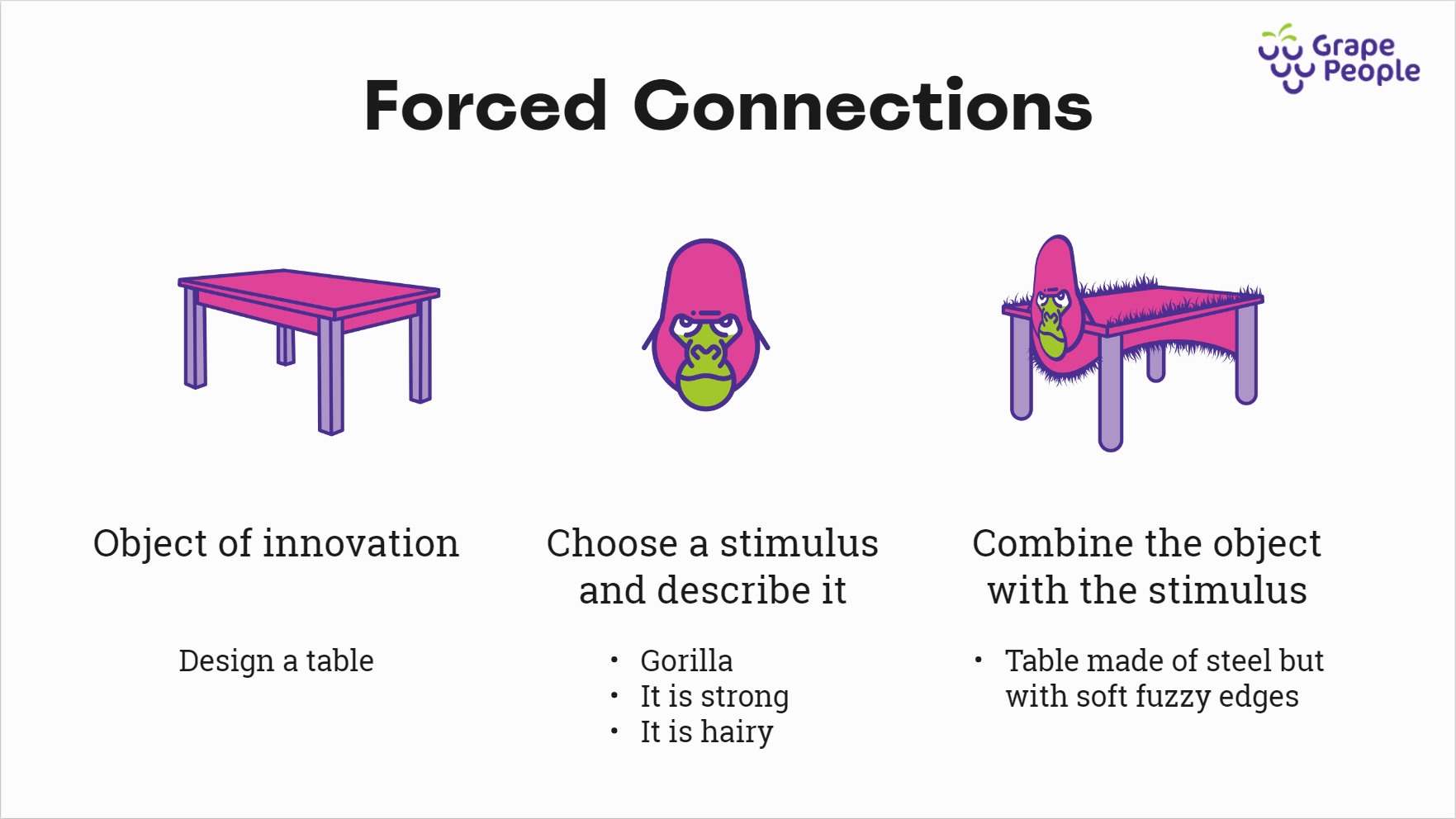
What to do about diversity in meetings?
Fortunately, the above solutions for inclusion also help us ensure diversity of thinking. The shorthand name for the method is Me-We-Us, for individual thinking (Me), small group discussion (We) and whole group discussion (Us). But that’s not all we can do.
Actionable advice for diversity:
- When you are planning for your ideation, brainstorming or other session that requires diversity of thinking, put careful thought into how you frame your questions. Do you already have a solution in mind? Keep it to yourself! Engage the group in understanding the question first. Are we even asking the right question? What else might the question be?
- Help the group delay the criticising, filtering, and prioritising of ideas until possibilities have been explored enough. One reason for a lack of fresh ideas is that whenever those new ideas are presented, they are criticised before they are properly explored.
- If you want to increase diversity of ideas even more, use methods like Forced Connections or SCAMPER.
Rigorous convergent thinking
In the previous section I advised against criticising ideas too early. It is, however, crucial to eventually look at the body of ideas critically. Too many brainstorming workshops end up with dozens of ideas but do not lead to decisions.
All decisions require two types of thinking: divergent and convergent. Divergent thinking means exploring and expanding the possibility space. Convergent thinking means applying filters and criteria; selecting the best ideas going forward.
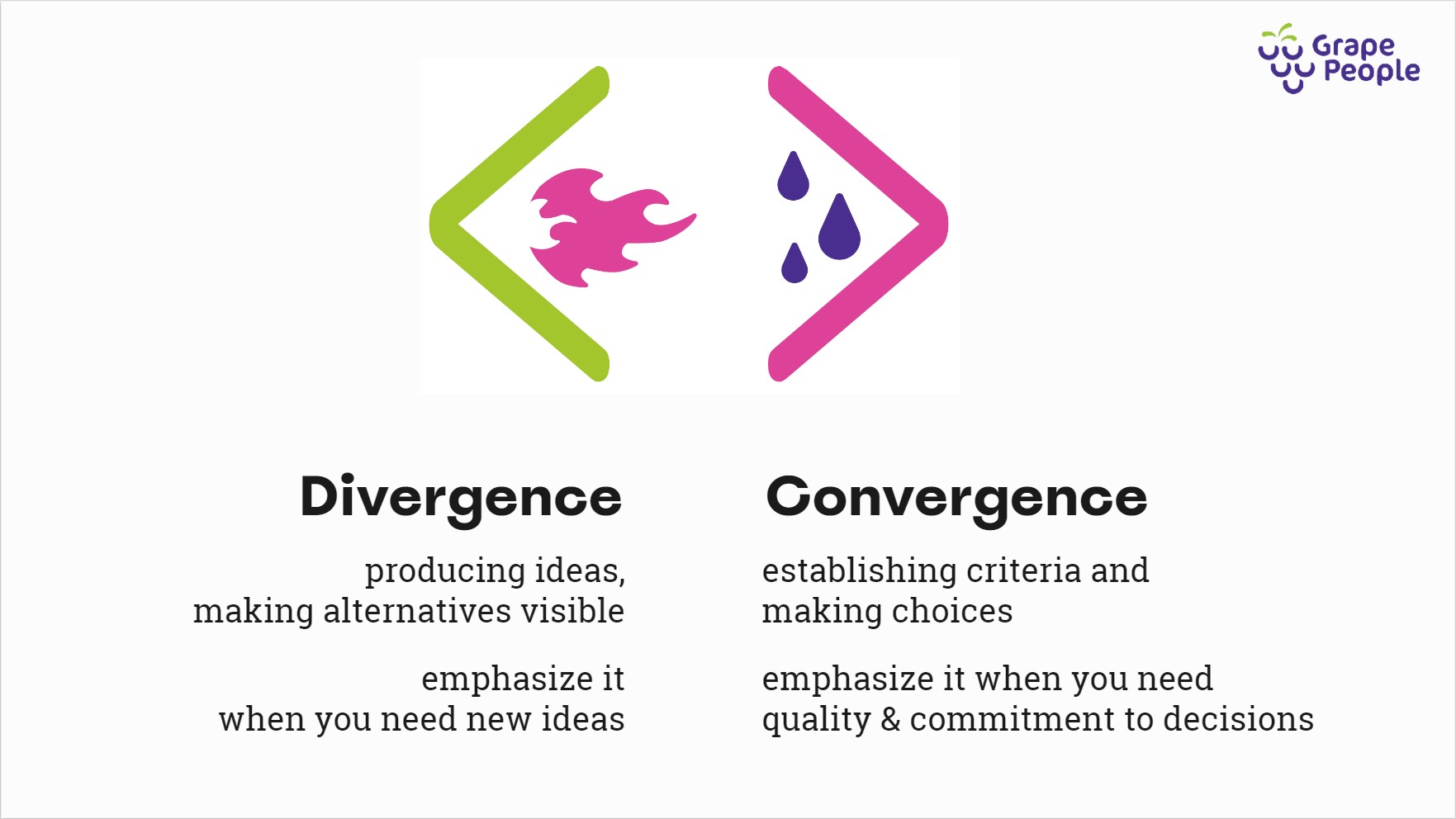
What to do about rigorous thinking in meetings?
Often convergence is done too quickly. Investing time into the convergence stage of thinking ensures that:
- we have few enough ideas so we can get a clear outcome
- the ideas we choose are well understood
- participants understand the logic (own & others’) behind idea selection
- people can commit to the outcome
The simple advice is: slow decision making down. Allow time for individual thinking, small group discussion, and whole group sense-making (Me-We-Us as described above). Give the group clear selection criteria, or create selection criteria with the group. Mix the small groups so people hear many different viewpoints.
Actionable advice for rigorous thinking:
- Before selecting the best ideas, make sure the ideas are well understood.
- Before selecting the best ideas, clarify the selection criteria.
- Before selecting the best ideas as a group, ask people to select individually.
- Before selecting the best ideas as a group, ask people to discuss their selections in small groups. Mix the groups and do multiple rounds to increase alignment.
Commitment to outcomes
The work we do on convergence goes a long way towards creating commitment to outcomes. The longer we spend thinking about a problem together, the stronger commitment we are able to get from the group.
What to do about commitment to outcomes:
Commitment after a meeting is dependent on many factors, including purpose and expectation discussion ahead of the meeting. There is a clear method for checking for the group’s commitment, however: the five-finger check.

Actionable advice to increase commitment:
- Include participants in the decision-making process, starting from the reason the meeting is held in the first place.
- Create psychological safety from start to finish, encouraging everyone to participate.
- Tie the meeting to the larger context: why is this meeting important? What happens after? How are the outcomes used? How will this work be followed up?
- Dedicate time separately for action planning.
- Use the five fingers method to check for commitment at various points in the process.
Creating group alignment
The ultimate goal for any leader is to create or strengthen alignment. All of the previous solutions aim at creating group alignment. Many of the methods require the leader to step aside and give more responsibility to the group. They require that the leader trust the group’s desire and ability to contribute.
In truth, this is an iterative process: when I as leader give more responsibility to the group, their desire to contribute grows. As they practice taking leadership, their ability grows. As their ability to practice leadership grows, I can give them even more responsibility.
This ties into Daniel Pink’s autonomy-mastery-purpose framework. It taps into people’s desire to be part of something larger than themselves and gives them freedom and authority make decisions on an ever larger scale, growing both their commitment to the group’s purpose and their ability to make good decisions.
The question we must ask ourselves as leaders is: where are we right now as a group? How much responsibility are people used to taking? What is the next step, if I want to create stronger alignment?
How do you define “success”?
I have outlined some of the core principles we believe makes leaders and organisations successful. Whether we are helping a business department create and implement a strategy, delivering facilitation training for team leads, or hosting free Sparks of Inspiration, these principles are at the heart of our thinking.
We live out these principles every day. We include every team member in strategy workshops. We have regular coaching sessions to make sure everyone is serving both their own growth and that of the company. In effect, we lead our company together.
I believe that is what makes a company sustainable: using the wisdom of the collective to make good decisions for us as individuals, for us as a team, and for our clients.
Contact us. We are here to help you. [email protected]
⭐ Learn more about Engaging Online Collaboration >> ⭐
About the writer:
Jonas Rajanto is a facilitator specialised in remote working and online collaboration. He trains team leaders, project managers, trainers, educators, salespeople, and others for whom virtual meetings are an integral part of their work. Jonas’s mission is to make working remotely feel just like working in the same room.
Get to know Jonas: LinkedIn | Twitter
Feel free to reach out in case you would like a tailored training
for your team or organization: [email protected].
We are more than happy to help you!

